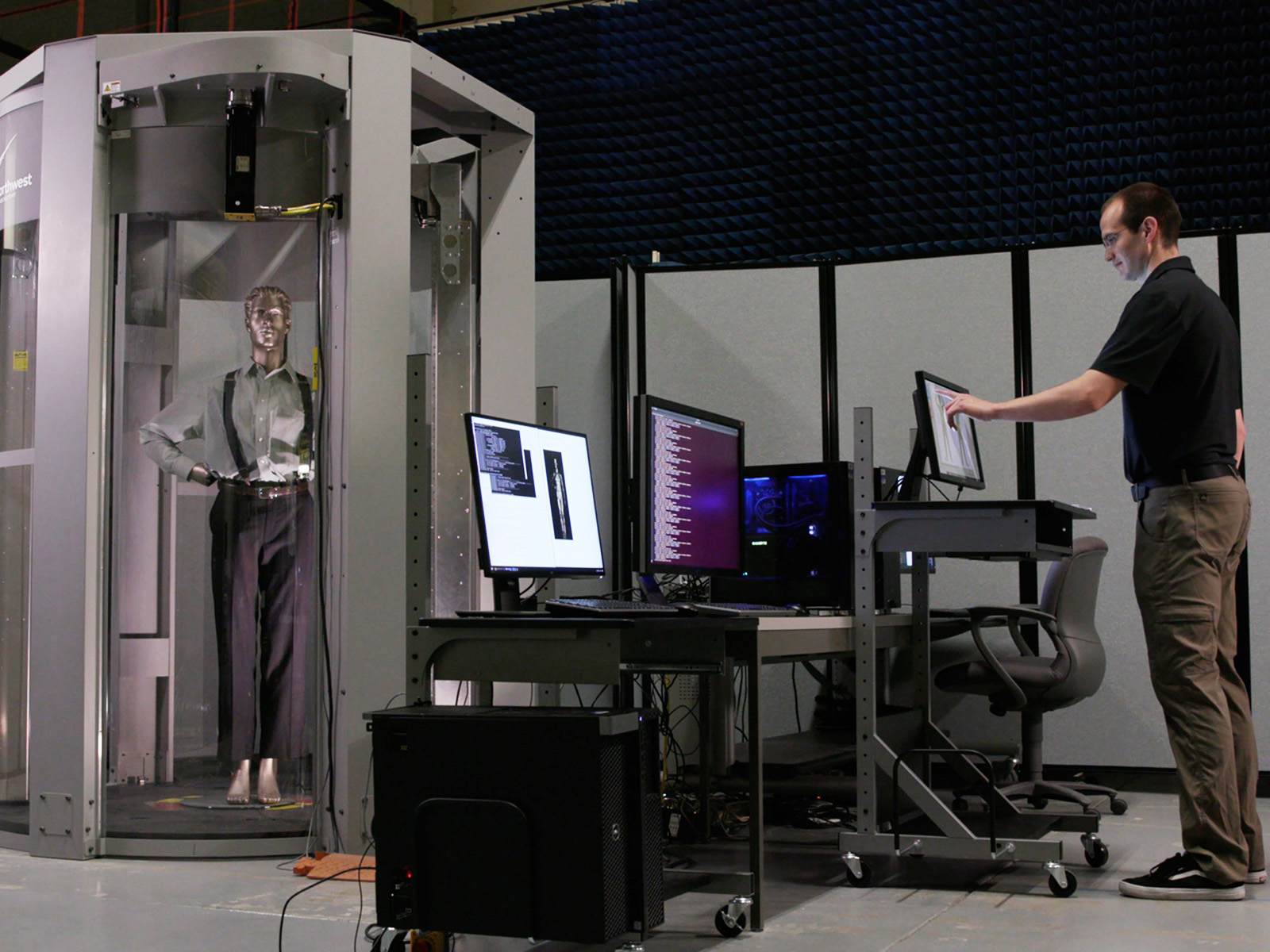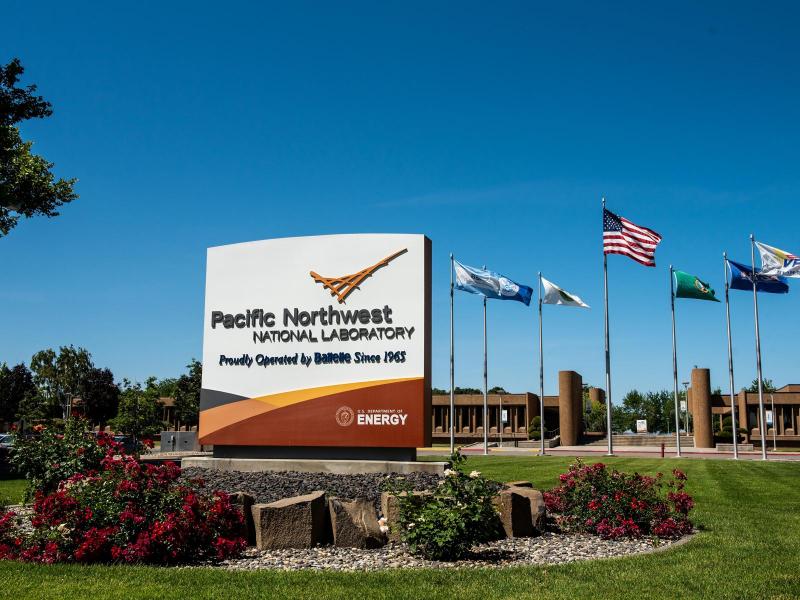
Millimeter Wave
Millimeter Wave
The events of 9/11 transformed airport security, bringing not only tighter regulations and increased security measures but also technological advances that make our airports and air travel safer. Scientists and engineers at Pacific Northwest National Laboratory (PNNL) heard the call and determined how to use non-harmful, ultrahigh-frequency radio waves—called millimeter waves—to penetrate clothing and rapidly scan for concealed objects and then project the final 3-D holographic image on a computer.
Today, millimeter-wave technology is deployed in airports around the world. PNNL has expanded the technology—from shoe scanners to walk-by detection—to increase throughput at security checkpoints while improving threat detection to protect airline passengers and enhance national security.
A solution based on electromagnetic waves
PNNL developed the original holographic millimeter-wave scanning technology to detect a wide variety of potential weapons or threats concealed under clothing. Millimeter-wave technology uses non-harmful, ultrahigh-frequency radio waves to penetrate clothing and reflect off of the body, sending signals back to a transceiver. The signals are similar in power to that of a cell phone, and they do not penetrate the skin. The received signals are sent to a high-speed computer, which mathematically focuses them to create a final high-resolution 3-D holographic image. This process reveals hidden objects, including metallic and non-metallic threats and contraband.

An R&D and technology transfer success
The roots of PNNL’s millimeter-wave technology date back to the 1960s when researchers pioneered the development of optical and acoustic holography—the foundation of the millimeter-wave technology. In 1989, PNNL started working with the Federal Aviation Administration performing feasibility studies, and the first patent was issued in 1995. Since then, the technology has gone on to garner not only worldwide recognition in airport security posture (i.e., the “PNNL salute”), but it has also garnered multiple Federal Laboratory Consortium Awards and R&D 100 awards.
In 2003, millimeter-wave holographic scanning technology was first licensed by Battelle and introduced as the SafeView Scout system for security applications. SafeView, a start-up company that based its business plan on this innovative technology, is a good example of commercialization at its best. Battelle, through PNNL, developed a technology—a company licensed it and contracted to develop a security system. L-3 Communications acquired SafeView in 2006 and renamed the millimeter-wave whole-body imager as ProVision™. The technology was also licensed to Intellifit, a company focused on consumer measurement technologies, for body measurement applications. Most recently, PNNL expanded and advanced the capabilities of the original scanners, resulting in a next-generation, high-definition scanner that can identify even smaller threats with fewer false positives. PNNL licensed the technology to Liberty Defense Holdings, Ltd., a concealed weapons detection company, in 2021.
The technology is currently available for commercialization. Licensing a patented PNNL-developed technology or copyrighted software is a simple and quick process made available to existing and startup companies. Through an exclusive or nonexclusive agreement, these innovations can be transformed into commercial products or solutions that give your organization a competitive advantage. To learn more and begin the licensing process, visit https://www.pnnl.gov/licensing-process or contact [email protected].

One solution, many applications
Millimeter-wave technology has several potential applications—it can be used in standoff detection of explosives, in custom safety equipment (resulting from the capability to perform accurate 3-D body measurements), in ergonomic applications (body scans for designing custom cockpit seats), in entertainment and gaming (digitization of the body and putting oneself in the game as an avatar), in physical fitness applications (serving as a physical digital tape measure), in non-destructive evaluation (for moisture detection in wood structures), and through-barrier imaging.
Millimeter-wave shoe scanner
Millimeter-wave technology continues to streamline and enhance airport security screening. Using decades of experience with millimeter-wave technology, PNNL developed an approach to scan under a person’s feet for concealed objects in footwear, with no need for removal. The award-winning Millimeter-Wave Shoe Scanner uses millimeter-wave imaging integrated into the floor of a body-scanning portal to detect concealed objects in footwear. Travelers can quickly recognize the potential benefit: passengers would not need to remove their shoes to pass through airport security, thus reducing a bottleneck in screenings.

Real-time advanced imaging technology
The enhancements do not stop there. PNNL developed the Real-Time Advanced Imaging Technology with advanced millimeter-wave imaging to detect threats through clothing and other optical obscurants at video frame rates. This rate allows for faster imaging, such that the person being screened does not have to stand still or “pose.” This technology represents the newest iteration of security screening, building on the traditional millimeter-wave technology to deliver faster and more natural passenger screening at airports and other secure facilities.



